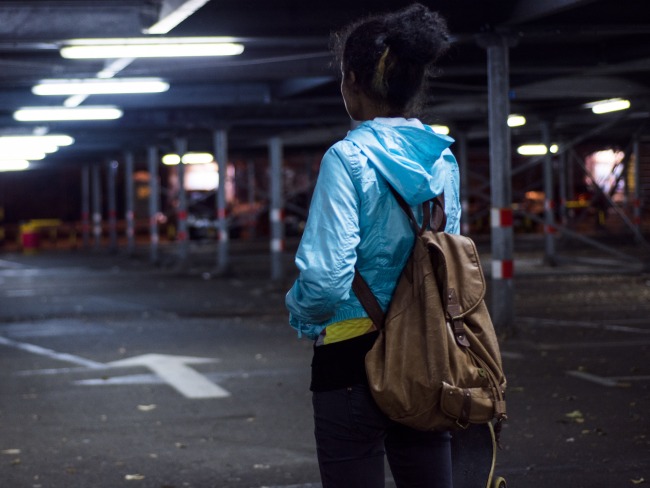Race and Punishment: Racial Perceptions of Crime and Support for Punitive Policies
Coming on the heels of the tragic events in Ferguson, Missouri, this report demonstrates that the consequences of white Americans’ strong association of crime with blacks and Latinos extend far beyond policing.
Related to: Racial Justice
Executive Summary
The American criminal justice system is at a critical juncture. In recent years, federal policymakers have called for reforms, following the lead of states that have reduced prison populations without compromising public safety. Nationwide prison counts have fallen every year since 2010, and the racial gap in imprisonment rates has also begun to narrow. Yet the recent tragic events in Ferguson, Missouri – where the killing of an unarmed African American teenager has sparked outrage – highlight the ongoing relevance of race in the criminal justice system.
To guide and give greater momentum to recent calls for reform, this report examines a key driving force of criminal justice outcomes: racial perceptions of crime. A complex set of factors contributes to the severity and selectivity of punishment in the United States, including public concern about crime and racial differences in crime rates. This report synthesizes two decades of research establishing that skewed racial perceptions of crime – particularly, white Americans’ strong associations of crime with racial minorities – have bolstered harsh and biased criminal justice policies. This report concludes that:
White Americans are more punitive than people of color.
Whites are more punitive than blacks and Hispanics even though they experience less crime. For example, while the majority of whites supported the death penalty for someone convicted of murder in 2013, half of Hispanics and a majority of blacks opposed this punishment. Compared to blacks, whites are also more likely to support “three strikes and you’re out” laws, to describe the courts as not harsh enough, and to endorse trying youth as adults. And yet, blacks and Hispanics are far more likely than whites to be victims of violent and property crimes.
Whites misjudge how much crime is committed by African Americans and Latinos.
White Americans overestimate the proportion of crime committed by people of color, and associate people of color with criminality. For example, white respondents in a 2010 survey overestimated the actual share of burglaries, illegal drug sales, and juvenile crime committed by African Americans by 20-30%. In addition, implicit bias research has uncovered widespread and deep-seated tendencies among whites – including criminal justice practitioners – to associate blacks and Latinos with criminality.
Whites who more strongly associate crime with racial minorities are more supportive of punitive policies.
White Americans who associate crime with blacks and Latinos are more likely to support punitive policies – including capital punishment and mandatory minimum sentencing – than whites with weaker racial associations of crime. This relationship exists even after controlling for other relevant factors such as racial prejudice, conservatism, and crime salience.
Media crime coverage fuels racial perceptions of crime.
Many media outlets reinforce the public’s racial misconceptions about crime by presenting African Americans and Latinos differently than whites – both quantitatively and qualitatively. Television news programs and newspapers over-represent racial minorities as crime suspects and whites as crime victims. Black and Latino suspects are also more likely than whites to be presented in a non-individualized and threatening way – unnamed and in police custody.
Policymakers’ actions and statements amplify the public’s racial associations of crime.
Whether acting on their own implicit biases or bowing to political exigency, policymakers have fused crime and race in their policy initiatives and statements. They have crafted harsh sentencing laws that impact all Americans and disproportionately incarcerate people of color. Through public statements, some have stoked the public’s heightened concern about crime and exaggerated associations of crime with racial minorities.
Criminal justice practitioners also operate with and reinforce racial perceptions of crime.
Disparities in police stops, in prosecutorial charging, and in bail and sentencing decisions reveal that implicit racial bias has penetrated all corners of the criminal justice system. Moreover, policies that are race-neutral on their surface – such as “hot spot” policing and certain risk assessment instruments – have targeted low-income people of color for heightened surveillance and punishment.
Racial perceptions of crime have distorted the criminal justice system.
By increasing support for punitive policies, racial perceptions of crime have made sentencing more severe for all Americans. The United States now has the world’s highest imprisonment rate, with one in nine prisoners serving life sentences. Racial perceptions of crime, combined with other factors, have led to the disparate punishment of people of color. Although blacks and Latinos together comprise just 30% of the general population, they account for 58% of the prison population.
Racial perceptions of crime have undermined public safety.
By increasing the scale of criminal sanctions and disproportionately directing penalties toward people of color, racial perceptions of crime have been counterproductive for public safety. Racial minorities’ perceptions of unfairness in the criminal justice system have dampened cooperation with police work and impeded criminal trials. In 2013, over two-thirds of African Americans saw the criminal justice system as biased against blacks, in contrast to one-quarter of whites. Crime policies that disproportionately target people of color can increase crime rates by concentrating the effects of criminal labeling and collateral consequences on racial minorities and by fostering a sense of legal immunity among whites. Finally, racial perceptions of crime have even led to the deaths of innocent people of color at the hands of fearful civilians and police officers.
The report concludes with recommendations for how the media, researchers, policymakers, and criminal justice professionals can address and mitigate the effects of racial perceptions of crime, and lay the groundwork for more just crime control policies.



